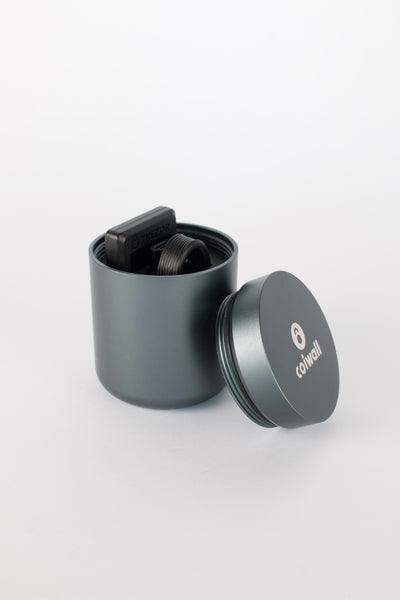Ever glanced at a blockchain project and wondered, 'How decentralized is this thing, really?' It's not as simple as counting the number of nodes or users. The Nakamoto Coefficient, named after the mysterious Satoshi Nakamoto, gives us a handy lens for measuring just that. Pull up a chair and let’s unravel what this number tells us—and why it matters so much in the cryptoverse.
The Basic Gist: What is the Nakamoto Coefficient?
Picture a bunch of kids at a lemonade stand, each with their own pitcher. Some have more lemonade than others. If a few join forces and start controlling how much lemonade gets served, they can make or break the stand. That’s kind of how blockchains work with miners and validators. The Nakamoto Coefficient quantifies how many independent entities—mining pools, validators, or node operators—it takes to gain enough control (usually 51%) to, well, boss around the blockchain. The larger the number, the more decentralized the system. If you only need one or two big players to tilt the scales, the network is at risk of being hijacked (source).
Where Did This Idea Come From?
Time for a brief history lesson—don’t worry, no pop quiz. Balaji Srinivasan, a pretty well-known name in the crypto space, coined the term. The idea took off because, before this measure, everyone was kind of winging it, guessing if a network was really 'decentralized.' Now, there’s a straightforward (though not flawless) way to check.
How Do You Calculate It? Let’s Break It Down
There are only a couple of steps, but things can get fuzzy fast. Here’s the gist:
- Identify the Big Players. Maybe they're miners in a Proof of Work network like Bitcoin, or validators in Proof of Stake chains like Ethereum.
- Check Their Slice of the Pie. Who has how much control? In Bitcoin, it’s all about hashrate. PoS? It’s about who’s staking the most.
- Add ‘Em Up, One by One. Start with the biggest, add the next, and so on—until you cross the 51% mark.
The number of separate entities you need to hit that point? That’s your Nakamoto Coefficient (Ledger Academy).
Let’s Use a Real-World Example
Say there's a blockchain with five mining pools. Here’s their share of the action:
- Pool A: 25%
- Pool B: 20%
- Pool C: 15%
- Pool D: 10%
- All Others: 30%
Add up the biggest until you tick past 51%. Pool A + Pool B + Pool C = 60%. Took three entities. So, the Nakamoto Coefficient is 3. If only one pool could hit 51% alone, well, things just got scary.
Why Does This Number Even Matter?
Let’s be real: nobody wants to put their crypto in a house with a single lock. The Nakamoto Coefficient is like checking for deadbolts. The higher the coefficient, the harder it is for anyone—or just a cozy cabal—to mess with your assets, rewrite blocks, or pull shenanigans with consensus. Now, mix in hardware wallets like Trezor or Ledger, and you’re stacking your defenses: even if the chain is attacked, your actual coins have another layer of protection.
But, of Course, There’s a Catch
No measure is perfect, right? The Nakamoto Coefficient just looks at what's needed to disrupt consensus—not every nook and cranny of decentralization. Sometimes, these entities aren’t wholly independent. For example, big mining pools may talk off-chain, form alliances, or even share infrastructure. Plus, the metric doesn’t touch on development control, governance voting, or how easy it is for newcomers to join the network.
Let me explain why it still sticks around. It’s simple. When evaluating massive networks or writing about decentralization in a tweet-sized format, the Nakamoto Coefficient packs punchy clarity.
How Does It Stack Up Against Other Measures?
You might bump into other decentralization metrics, like Gini coefficients for wealth, or node distribution by geography. They have their uses, but they’re messier and harder to explain in a sentence at a blockchain meetup. The Nakamoto Coefficient isn’t the whole story, but it’s a great first chapter. And for people actually living and breathing crypto (not just reading headlines), hearing that Bitcoin’s coefficient hovers at 2—meaning just two mining pools control the majority—can really make you sit up and think (Cointelegraph).
So, What’s Happening in 2024?
Decentralization feels even more in the spotlight. Regulators pay closer attention. The community keeps debating 'real' decentralization, with fresh Layer 1 chains claiming bigger, safer coefficients. Meanwhile, some major PoS networks are seeing new validator services spring up, partly pushed by everyday folks moving their coins into devices like Trezor or Ledger Nano S Plus (Ledger Academy). The message? Hold your own keys, join decentralized networks—don’t just trust the biggest dogs in the yard.
Small Tangent: A Word on Hardware Wallets
Honestly, as more networks figure out their decentralization stories, self-custody tools ride the same wave. Hardware wallets from Trezor and Ledger don’t just protect coins; they reinforce the idea that real decentralization happens when nobody, not even a centralized exchange, can freeze or swipe your crypto. It's almost poetic—and a little nerve-wracking—that decentralization depends as much on your choices as network math.
Wrapping Up: Is Higher Always Better?
Looks great on paper—a massive coefficient spells more security. But it’s not everything. Decentralized governance, open development, fair onboarding… those still matter. The Nakamoto Coefficient is a starting signal, not the victory lap. Next time someone brags about their chain’s numbers, remember to ask a couple more questions. Then, pour yourself a lemonade—because, you know what, this stuff can be thirsty work.











